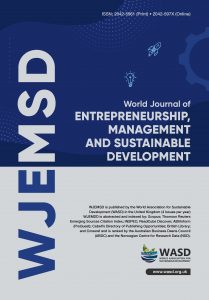(02) A report highlighting the role of King Salman Relief Centre in providing physical rehabilitation for the landmine victims in Yemen, Dr. Samer Aljetaily, Prof. Amen Bawazir, Dr. Loujayn Alhokail, Prof. Omar Kasule, Dr. Wasif Khan, Dr. Shahabuddin Shaikh
 Dr. Samer Aljetaily
Dr. Samer Aljetaily
King Salman Humanitarian Relief Center
Riyadh
Saudi Arabia
Email: s.aljetaily@ksrelief.org
Prof. Amen Bawazir
Department of Basic Medical Sciences, College of Medicine, AlMaarefa University
Riyadh
Saudi Arabia
Email: abawazir@mcst.edu.sa
Dr. Loujayn Alhokail
College of Law and Political Science, King Saud University
Saudi Arabia
Email: ljhokail@gmail.com
Prof. Omar Hasan Kasule
College of Medicine, AlMaarefa University
Riyadh
Saudi Arabia
Email: omarkasule@yahoo.com
Dr. Wasif Ali Khan
Department of Basic Medical Sciences, College of Medicine, AlMaarefa University
Riyadh
Saudi Arabia
Email: wkhan@mcst.edu.sa
Dr. Shahabuddin Shaikh
Department of Basic Medical Sciences, College of Medicine, AlMaarefa University
Riyadh
Saudi Arabia
Email: sshaikh@mcst.edu.sa
DOI: 10.47556/J.WJEMSD.19.3-4.2023.2
PURPOSE: The purpose of this study is to explore the role of King Salman Relief Centre (KSRC) in providing prostheses and orthotics to amputation victims of landmine explosions in the conflict zone in Yemen.
DESIGN/METHODOLOGY/APPROACH: Aggregated secondary data from KSRC were analysed. Variables used include sex, age group, affected limb, type of intervention, and area of residency. Data were entered into an Excel spreadsheet and further analysed using numbers and percentages.
STUDY FINDINGS: A total of 6,351 prostheses and orthotics were provided for people affected with amputations as a result of landmine explosions over a period of three years (2020-2022) in Yemen. The project was implemented in 14 governorates of Yemen. Under the project, the majority of the limb prostheses (53.2%) and orthoses (46.8%) were provided for lower limb amputations (60.3%) due to landmine explosions in addition to those for other medical reasons (36.8%). Up to 3% of the prosthetics and orthotics were provided to victims of landmines who had their upper limbs amputated. Most of the beneficiaries of the interventions were adults (65.2%), of which 85.9% and 14.1% were males and females, respectively. The remaining 35.8% of beneficiaries were children under 18 years of age (boys comprising 64.3% and girls 35.7%) two-thirds of which were under 15 years of age.
ORIGINALITY/VALUE: This is the first study in Yemen to explore the role of KSRC; however, the lessons learned from the correlation of the intervention study with the aid efforts can be used as a guide by KSRC themselves as well as by the other organisations working to deliver medical aid to conflict-ridden countries, to better manage the precious resources, and to identify any lacunae that may hinder full utilisation of the relief efforts. The data generated through these efforts can be used to further improve the efficiency of the relief effort and can guide policy-makers to judge the effectiveness of the project. This is in addition to utilising the resources diligently and closing any lacunae in the form of under-representation of any particular group of sex, age or geographic location. The study can be broadened further to include the parameters related to lifestyle, economic, and psychological benefits to the victims.
RESEARCH LIMITATIONS/IMPLICATIONS: A clear correlation between the actual levels of mine contamination in Yemen is not yet clear as ongoing armed conflict still acts to add to the extent and complexity of contamination, including improvised mines. Economic implications and other variables to assess the consequences of the intervention as well as amputations were not collected; this should be included in further studies.
PRACTICAL IMPLICATIONS: Disadvantaged countries, such as Yemen, with limited economic resources, have many obstacles to rehabilitating landmine victims due to low societal awareness, low resources, as well as the existence of war. Therefore, KSRC is an example of an effort contribution to provide much-needed humanitarian assistance and physical rehabilitation as part of health sector programmes.
KEYWORDS: Landmines, Prostheses, Orthotics, KSRC, Yemen.

